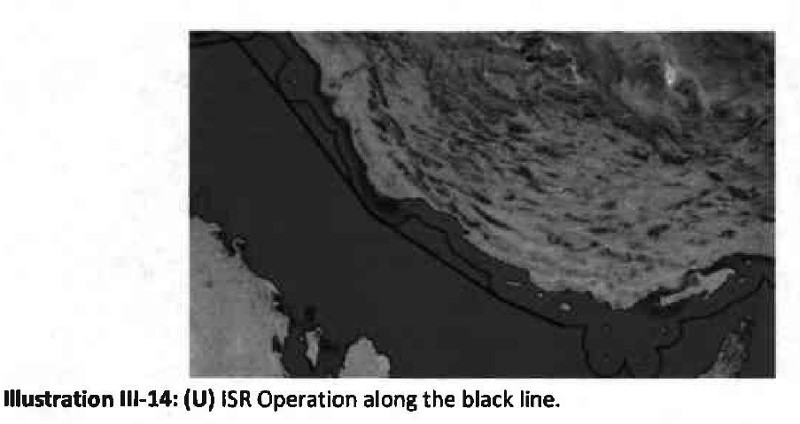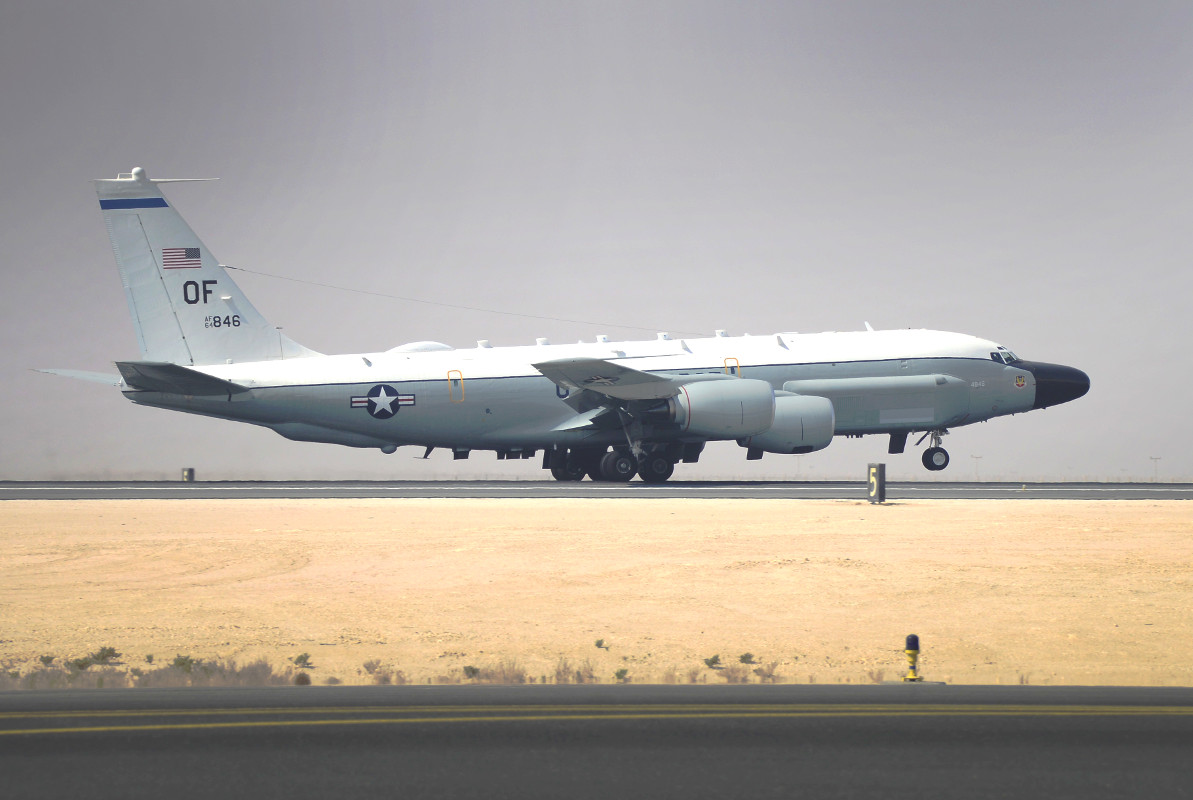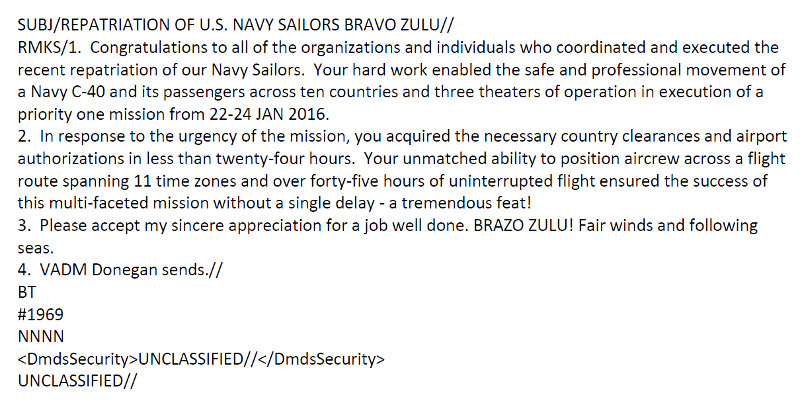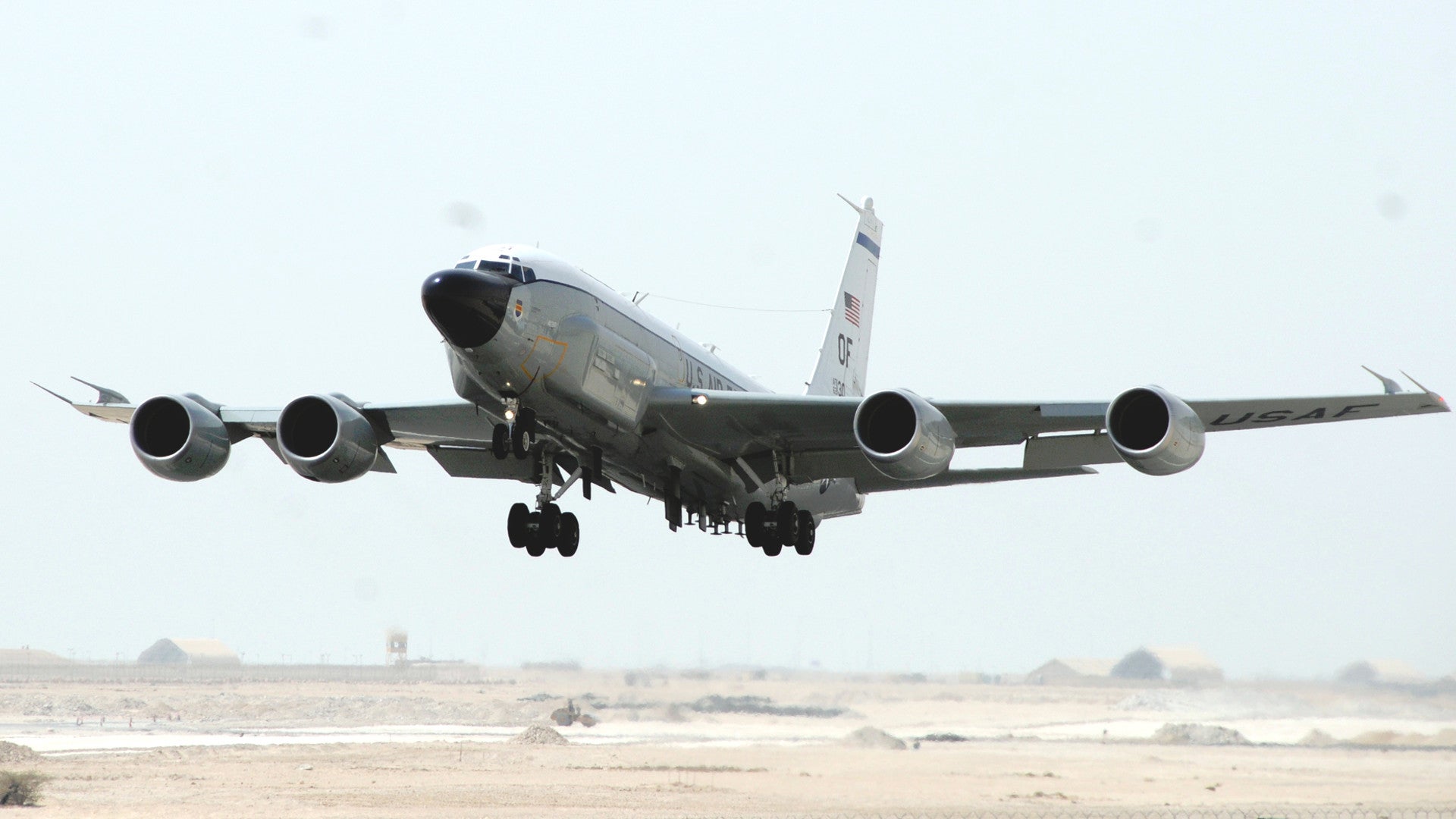As 10 U.S. Navy sailors sat in the custody of Iran’s quasi-military Islamic Revolutionary Guard Corps (IRGC) on Farsi Island on the night of Jan. 12, 2016, they had no idea what to expect. By the next day, though, a U.S. Air Force RC-135V/W Rivet Joint signals intelligence plane was orbiting nearby, listening in on the Iranian’s communications and eventually making sure they followed through with the deal to free the Americans.
The crew of that aircraft, which had the callsign Python 72, won the 2016 General Jerome O’Malley Award for the best reconnaissance crew in the United States Air Force. The independent Air Force Association gives out this honor each year and presented it to the crew during its main yearly convention in September 2017. The exact reason for the distinction remained obscure until the Omaha World-Herald obtained a copy of the official, unclassified nomination letter from U.S. Air Force Colonel George Reynolds, who had commanded the 55th Wing at Offutt Air Force Base in Nebraska at the time.
“This crew demonstrated superior airmanship and tenacity while conducting sustained combat support operations in support of coalition forces,” Reynolds explained in one utterly boilerplate description of the mission, according to the World-Herald. The officer made clear elsewhere in his letter, though, that Python 72’s sortie was anything but ordinary, even by the standards of an aircraft that spends its time quietly spying on enemy troops.
Packed with various systems to spot, track, and record communications transmissions, the 17 Rivet Joints spend their time forward deployed around the world flying various patrols in both active conflict zones, including Iraq and Syria, and near potential opponents, such as North Korea. In 2016, another RC-135V/W crew from the 55th, which went by the callsign Python 71, won the O’Malley Award for a mission against ISIS in the Iraqi city of Fallujah the previous year. The Wing controls all of these aircraft, along with the three RC-135S Cobra Ball and two RC-135U Combat Sent aircraft, both of which are configured to gather other types of electronic intelligence.
The events that led to the flight remain controversial. On Jan. 12, 2016, a pair of Riverine Command Boats (RCB) assigned to the U.S. Navy’s Fifth Fleet set out on a routine transit between Kuwait and Bahrain. During the trip, one of the craft broke down and drifted into Iranian territorial waters near Farsi Island, at which point IRGC forces surrounded the Americans and detained them.
A subsequent U.S. Navy investigation uncovered a series of missteps on the part of the two crews both during their planned operation and when the Iranians intercepted them. The review also placed blame on leadership within Fifth Fleet for rushing ahead with the transit in spite of obvious risks from the outset. Lastly, the service faulted Iran for failing to respect international law and detaining the crew, despite their obvious lack of hostile intent.

Critics of the response, including then Republican presidential candidate Donald Trump, accused President Barack Obama, Secretary of State John Kerry, and the rest of the administration of taking a deferential stance toward Iran, not being more forceful in their response to the incident, and allowing the government in Tehran to humiliate the United States on the world stage. Kerry did obtain the release of the sailors after they had spent 15 hours in detention without concessions and the U.S. government denied issuing an official apology for the incident.
However, the Navy’s review noted that after learning Iran had captured the sailors, the Commander of Fifth Fleet, then U.S. Navy Vice Admiral Kevin Donegan, “directed a military response” in coordination with the Chief of Naval Operations, U.S. Central Command’s leadership, and the State Department. We now know this eventually included Python 72’s mission.
At the time, the Rivet Joint was forward deployed to Al Udeid Air Base in Qatar. The Air Force had originally planned for the Rivet Joint to fly a mission over Afghanistan, where the crew would likely have been zeroing in on and monitoring communications from the Taliban and other militant and terrorist groups.

On Jan. 13, 2016, though after getting word of the developing situation on Farsi Island, officials at the base requested permission to send the aircraft into the Persian Gulf instead. U.S. Central Command gave the green light and the RC-135V/W and its crew of 19 headed for the crisis area. On board were signals analysts and linguists who could find Iranian transmissions, listen in, and translate what they heard for any word of the captives.
Though both the Air Force and the Navy routinely conduct surveillance missions against Iran while passing up and down the Persian Gulf in international waters – a boundary route one Air Force report referred to simply as “the black line” – getting close to Farsi Island called for an atypical orbit, Colonel Reynolds explained in his letter, the World-Herald reported. But the information the RC-135V/W was scooping up turned out to be invaluable.

Thanks to a suite of powerful data links, the Rivet Joint was sending new information and updates to the Pentagon’s Joint Personnel Recovery Agency and the State Department in near real time. Secretary of State Kerry reportedly used some of the information to improve his negotiating position with the Iranians.
More importantly, after Iran did agree to release the sailors, bad weather forced the IRGC to keep shifting the drop off location. U.S. officials were concerned that the changes were a stalling tactic or, even a worse, a ruse to lead them into a trap. Python 72’s linguists were able to determine that the Iranians were telling the truth about the situation, averting further conflicts.
Even after the sailors were safe and sound, the RC-135V/W continued to orbit in the area, monitoring Iranian activities. Colonel Reynolds said the crew was able to gather an “unprecedented” amount of information on IRGC tactics and standard operating procedures during the operation, which could be invaluable in the future.

As we at The War Zone described in detail before, American sailors routinely find themselves squaring off against Iranian ships, forced to make split second decisions that could cause a major international incident. In this case, thanks in no small part to the crew of Python 72, a potentially more serious confrontation never occurred. It’s quite possible that there are still more important details yet to emerge about this incident, as well.
Thanks to one of our own Freedom of Information Act request, we at The War Zone know that a C-40A Clipper passenger plane from the U.S. Navy’s Fleet Logistics Support Squadron Five Eight (VR-58) criss-crossed ten countries between Jan. 22 and 24, 2016 in order to bring the crews of the two RCBs back to the United States.

That mission reportedly took 45 hours and covered 11 time zones in total. Vice Admiral Donegan included these details, but did not name any of the countries involved, and lauded the crew of this aircraft in an official letter dated Feb. 11, 2016, the bulk of which we have reproduced above.
As time goes on, perhaps more details about the U.S. military’s response to this controversial incident will continue to emerge.
Contact the author: joe@thedrive.com
